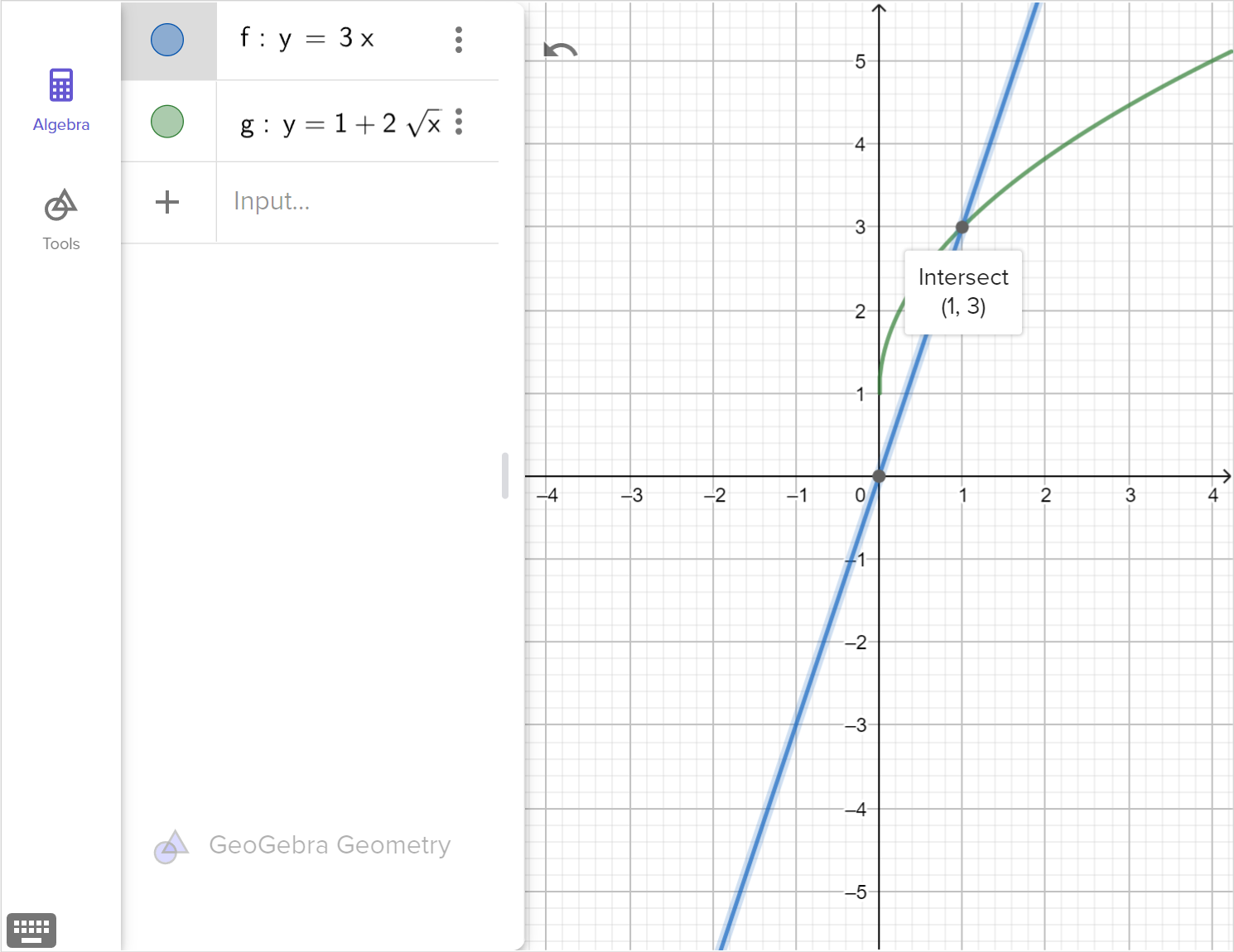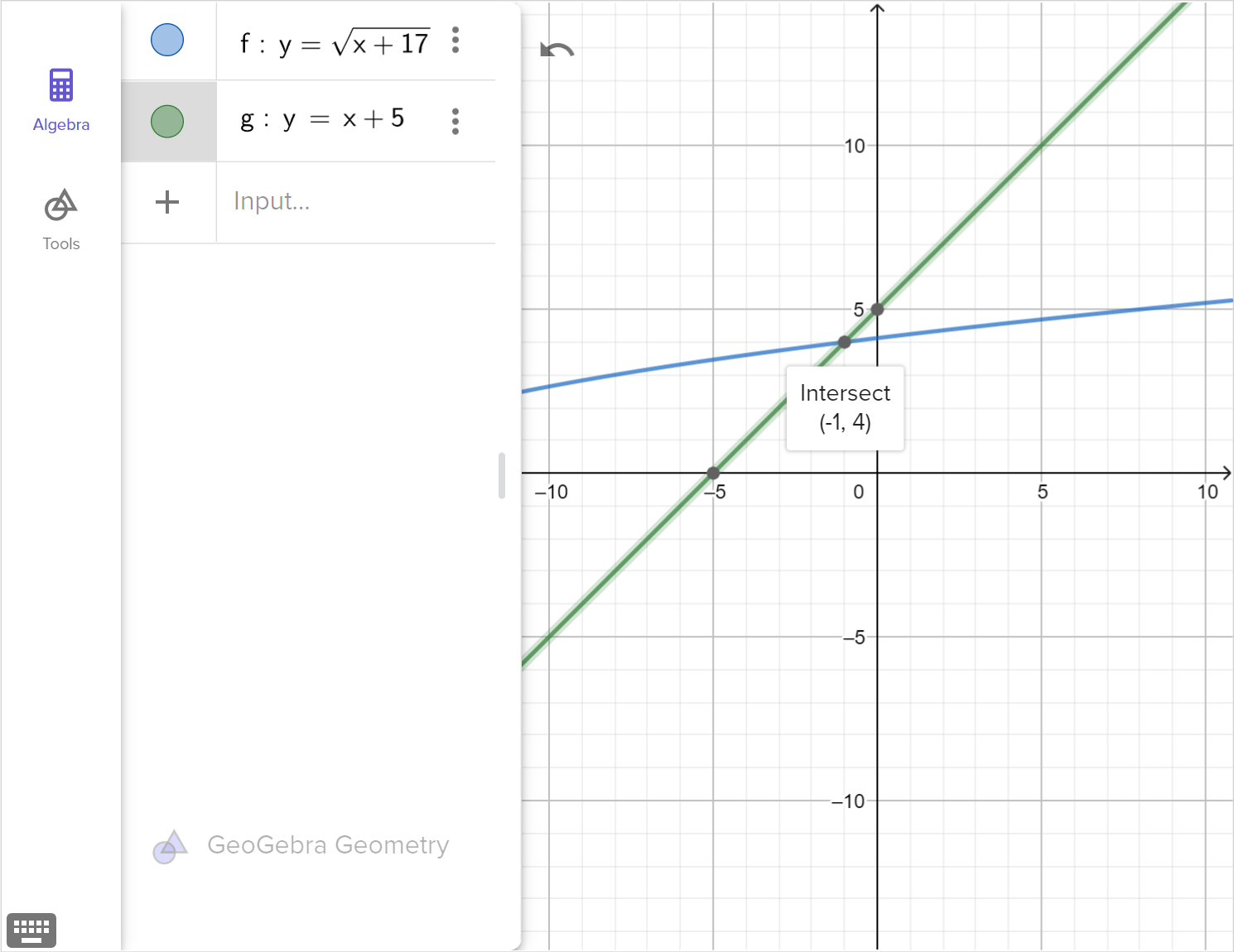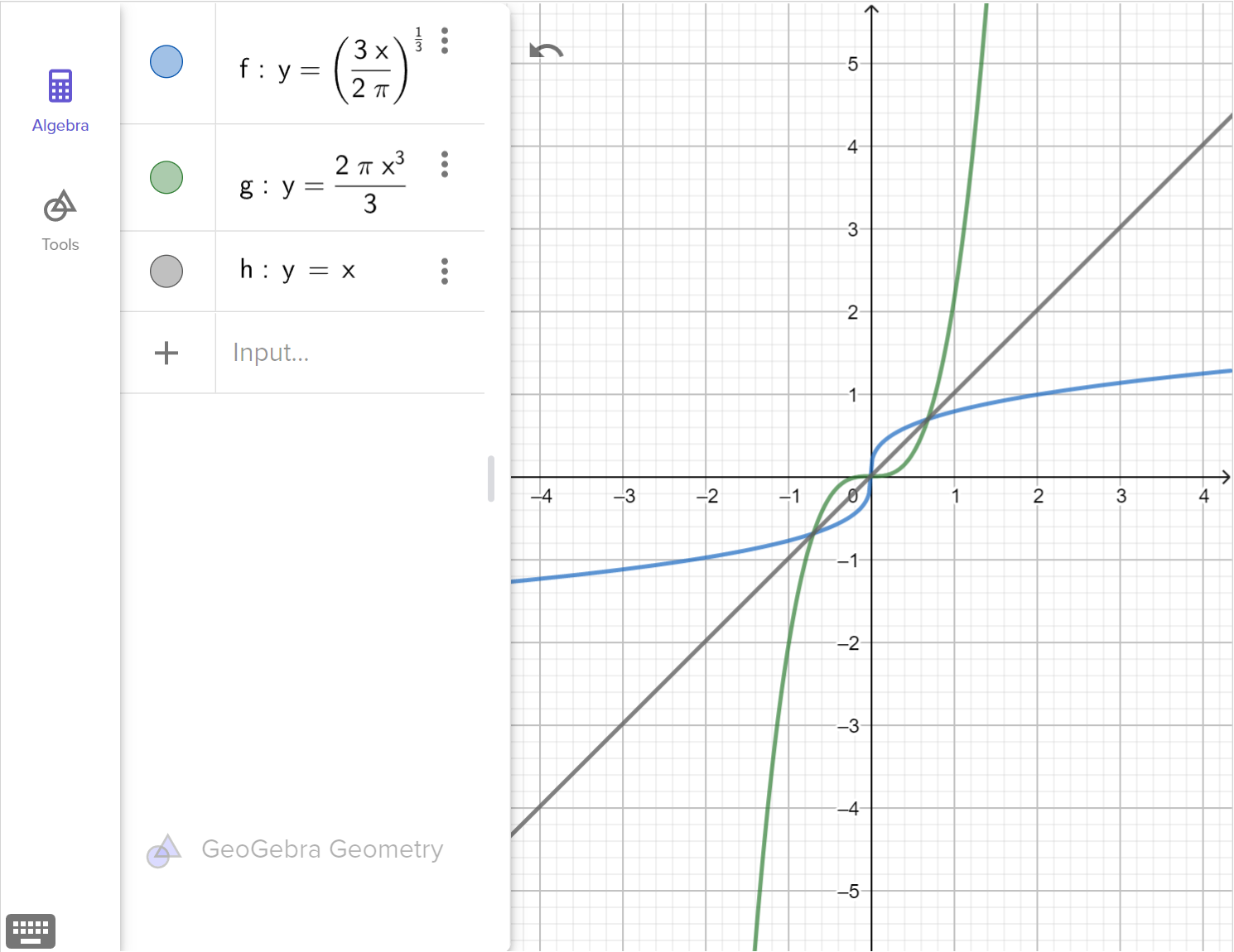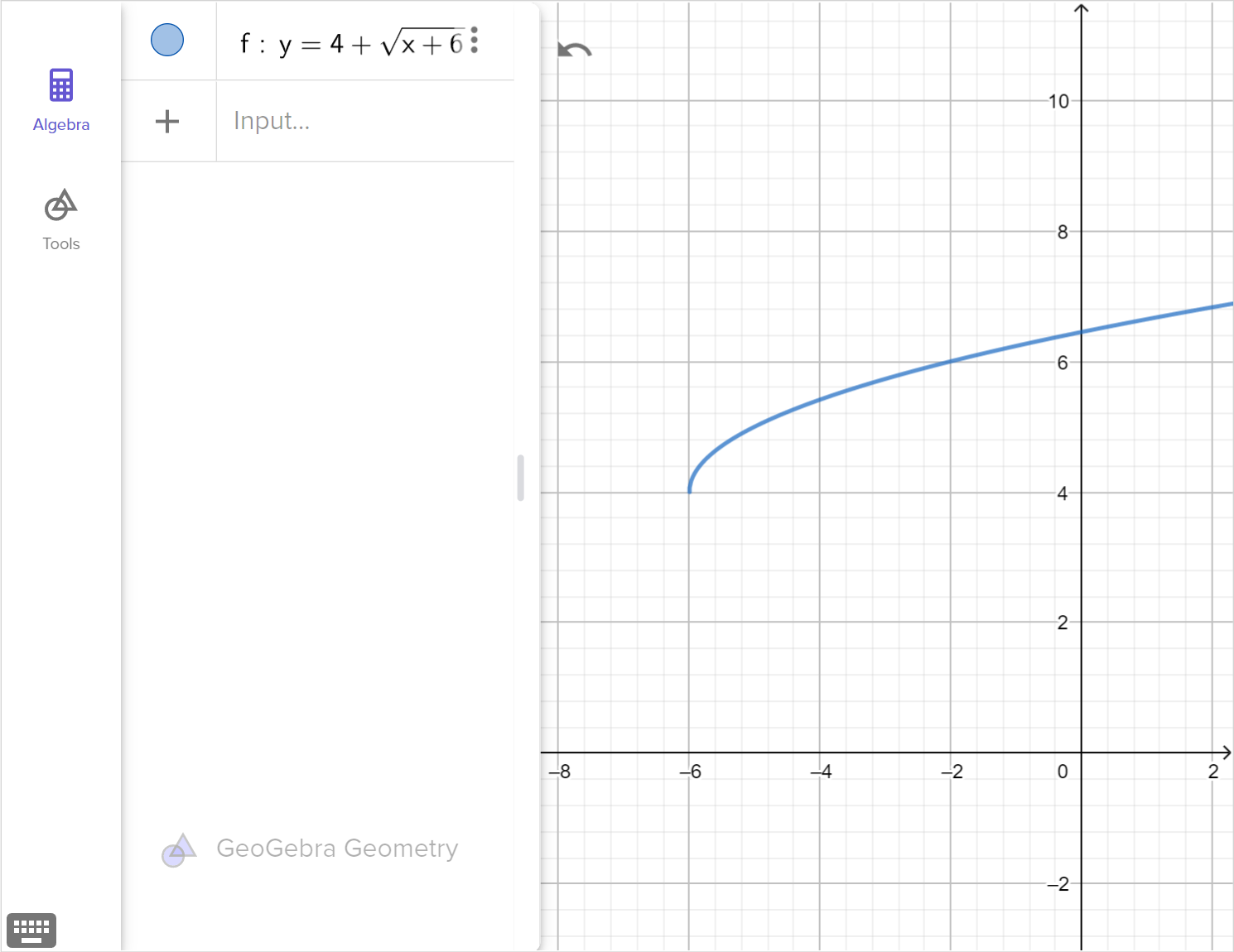7.03 Solving radical equations
Introduction
We learned about the inverse of a power function in lessons 7.01 Inverse functions and lesson 7.02 Graphing radical functions . We will solve equations of radical functions by applying the inverse operation, taking a power. The restricted domain of even root functions will potentially impact the types of solutions resulting from solving radical equations.
Solving radical equations
The process of solving radical equations is similar to solving a linear equation, that is, by using inverse operations. The inverse of a square root operation is squaring, and the inverse of an nth root, is to take the nth power.
When solving questions with real life applications, we also need to ensure we have viable solutions, which make sense within the context of the question. A non-viable solution does not make sense within the context of the question, such as a negative value when we are solving for the length of a physical object.
Exploration
Asha solves the following radical equation and states the solutions are x=-2 and x=-9:\sqrt{x+18} = x+6
Shown below is the graph of the system of equations represented by the radical equation: y = \begin{cases} \sqrt{x+18} \\ x+6 \end{cases}
- Algebraically check the given solutions to the equation \sqrt{x+18}= x+6.
- Based on the graph, what is the solution the to the system of equations formed by the equation \sqrt{x+18} = x+6?
- How do you think Asha obtained an additional solution?
When solving radical equations, it is possible to have an extraneous solution. This is why checking solutions to radical equations is an important part of solving radical equations.
Examples
Example 1
Solve the following equations:
\sqrt{y}+5=9
\sqrt[3]{4x-9}=-1
Example 2
For each of the following equations:
- Solve each equation for x and identify any extraneous solutions
- Write the equation as a system of equations
- Graph each system of equations
3x=1+2\sqrt{x}
\sqrt{x+17}=x+5
Example 3
The radius r of a cone whose height is equal to twice its radius is given by r = \sqrt[3]{\dfrac{3V}{2 \pi}}
Nirmal is studying an underwater volcano that is roughly this shape. Solve for the volume, V, of the volcano if it has a radius of 1.3\text{ km}. Round your answer to one decimal place.
Write a function for finding the volume of the volcano for any radius. How are the radius and volume functions related to one another?
Example 4
Consider the function f \left( x \right) = 4+\sqrt{x+6}.
State the domain and range of f\left(x\right).
Find the inverse function f^{ - 1 } \left(x\right).
It is important to algebraically substitute solutions into radical equations and identify whether solutions are valid or extraneous.



